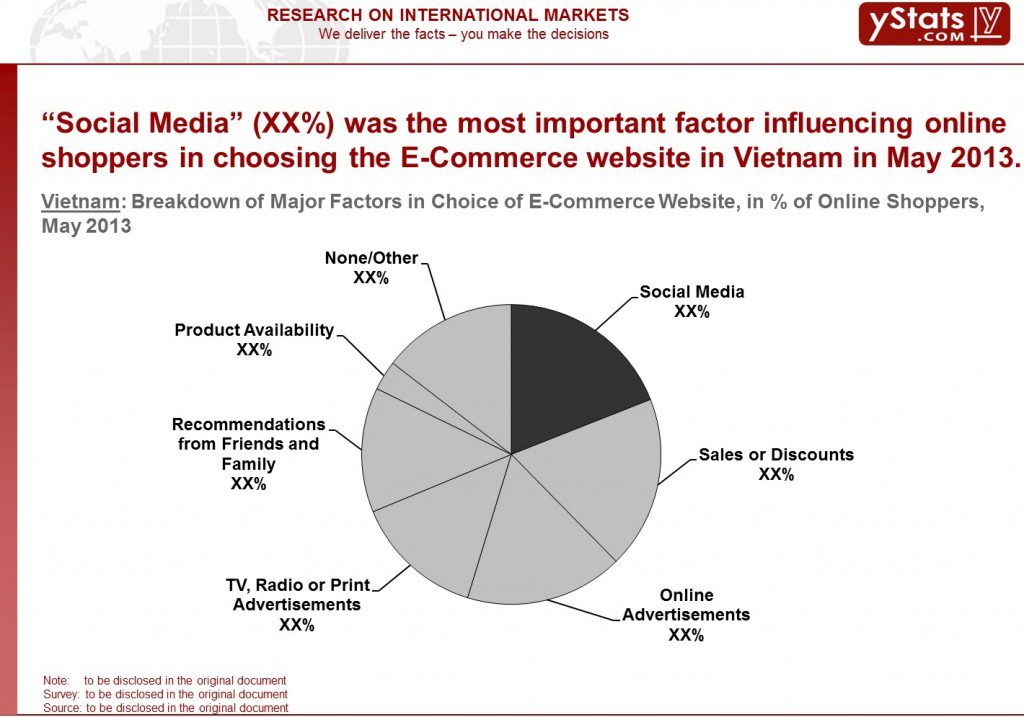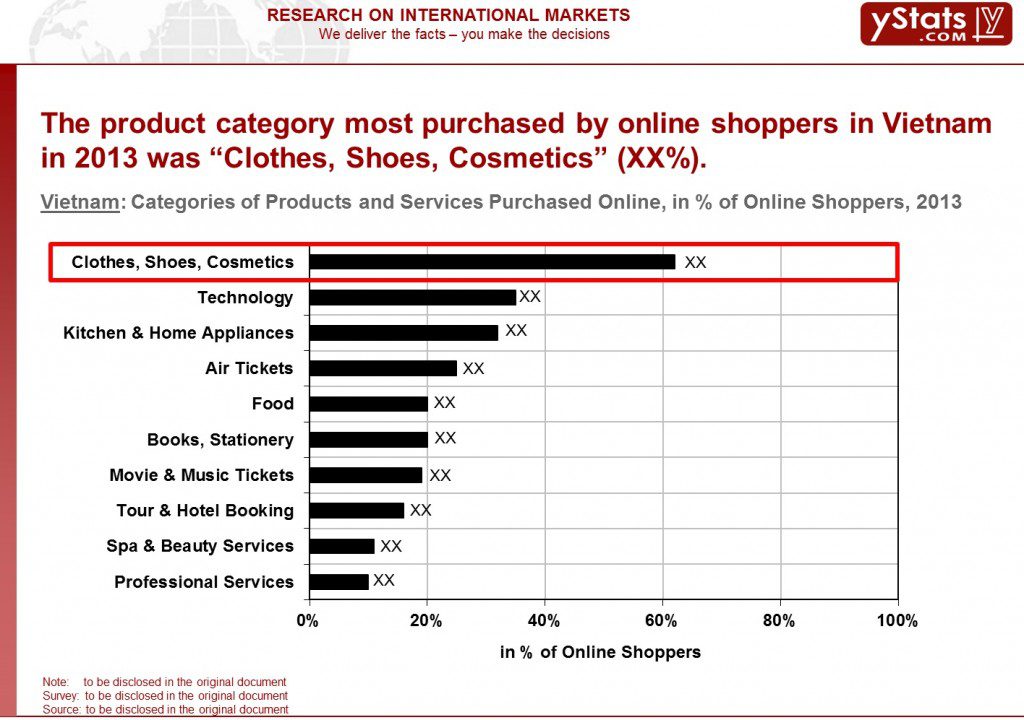The researchers at Hamburg-based secondary research organization yStats.com find that Vietnam has good potential for development of B2C E-Commerce. A new yStats.com report “Vietnam B2C E-Commerce Market 2014“ shows that the country has the fastest growing middle and affluent class in the South East Asia region and one of the most engaged online audiences, spending close to 30 hours per month online. Furthermore, a larger share of Internet users in Vietnam visits retail websites than in any other South East Asian countries, ahead of the worldwide average. A high consumer optimism index also contributes to the potential for growth of B2C E-Commerce in the country.
There were over 30 million Internet users in Vietnam last year, reaching over a third of the population. In the large cities of the country over half of Internet uses shop online. Though the potential is good and numbers are growing, major remaining challenges to development of B2C E-Commerce are the lack of modern payment systems and logistics and delivery services. Credit card penetration is low in Vietnam, so cash is predominantly used to settle retail payments, and B2C E-Commerce is dominated by cash on delivery. Logistics is also underdeveloped, though in a better condition than in India and Indonesia, according to an international rank. Both factors are gradually improving, benefitting B2C E-Commerce growth potential.
E-Commerce in Vietnam is governed by specific laws and special decrees, which are frequently updated. E-Commerce marketplaces are required to apply for registration, while independent B2C E-Commerce sellers can notify the relevant authorities about establishing a website. Non-compliance with the decrees is punished by fines, introduced in 2013.
A trend toward mobile commerce in Vietnam is supported by increasing smartphone penetration, as over a quarter of consumers in 2013 had such devices. A high double digit percentage share of smartphone owners buy via mobile and almost all of them research products and services through their smartphone.
Social commerce is another important trend in Vietnam. The majority of Internet users there visit social networks, with Facebook and ZingMe being the two most popular ones. Consumers in Vietnam often join social networks with the main purpose of finding reviews on products and joining E-Commerce groups, with 3 of the top 5 brands in Facebook being
E-Commerce companies. Social media was the major factor influencing the purchase decision of one fifth of online shoppers.
Group buying sites are very popular in Vietnam, including leaders such as Hotdeal.vn, Muachung.vn, Cucre.vn, Cungmua.com and Mhommua.com. Group buying websites sell not only coupons for services, but also physical goods, with leaders reporting as much as 70% of sales being generated by products.
The product categories most purchased by online shoppers in Vietnam in 2013 were clothing and electronics. The most popular model in E-Commerce in Vietnam is the online marketplace, including B2C and C2C players such as Vatgia.com, Enbac.vn, 5giay.vn. In pure B2C E-Commerce the leaders are Lazada.vn and Tiki.vn. Of the
E-Commerce sites specializing on one product category, the most popular are online fashion and beauty retailer Sendo.vn and online fashion retailer Zalora.vn. Store-based retailers also have online channels, especially electronics and appliances merchants such as Thegioididong.com, Dienmay.com and Nguyenkim.com.




